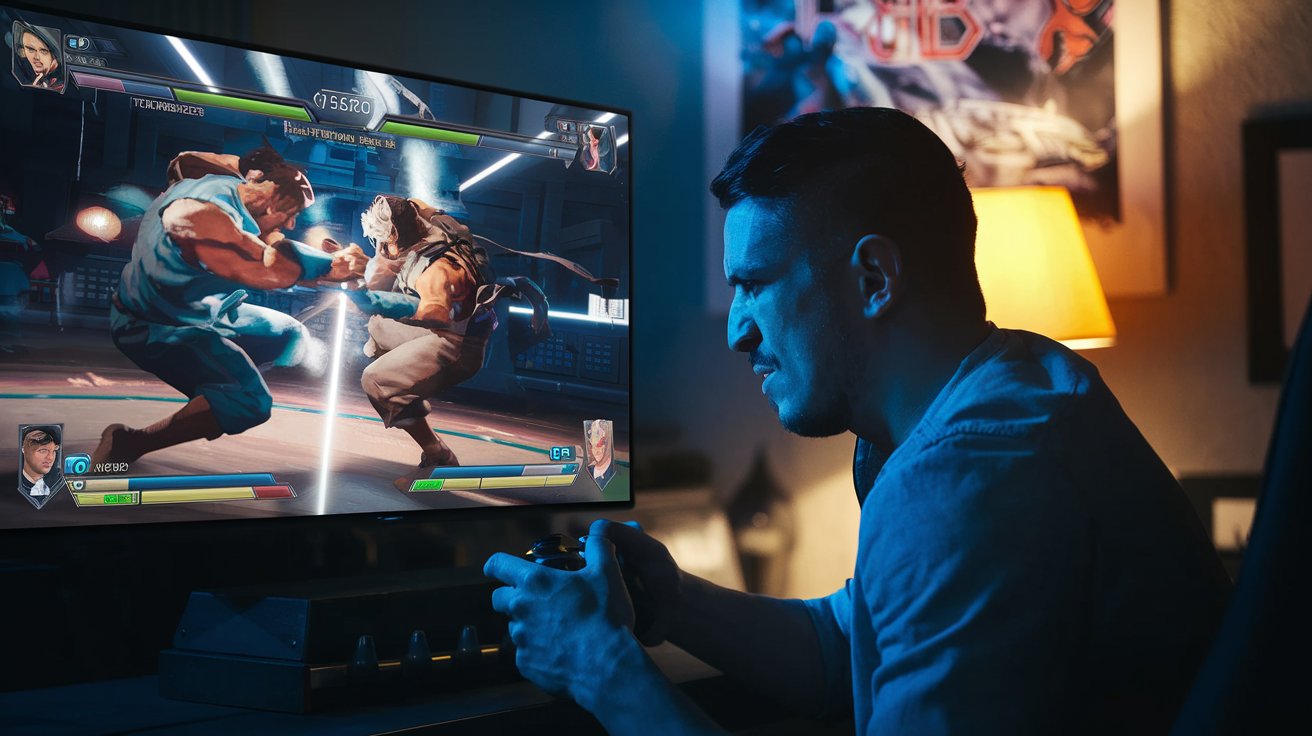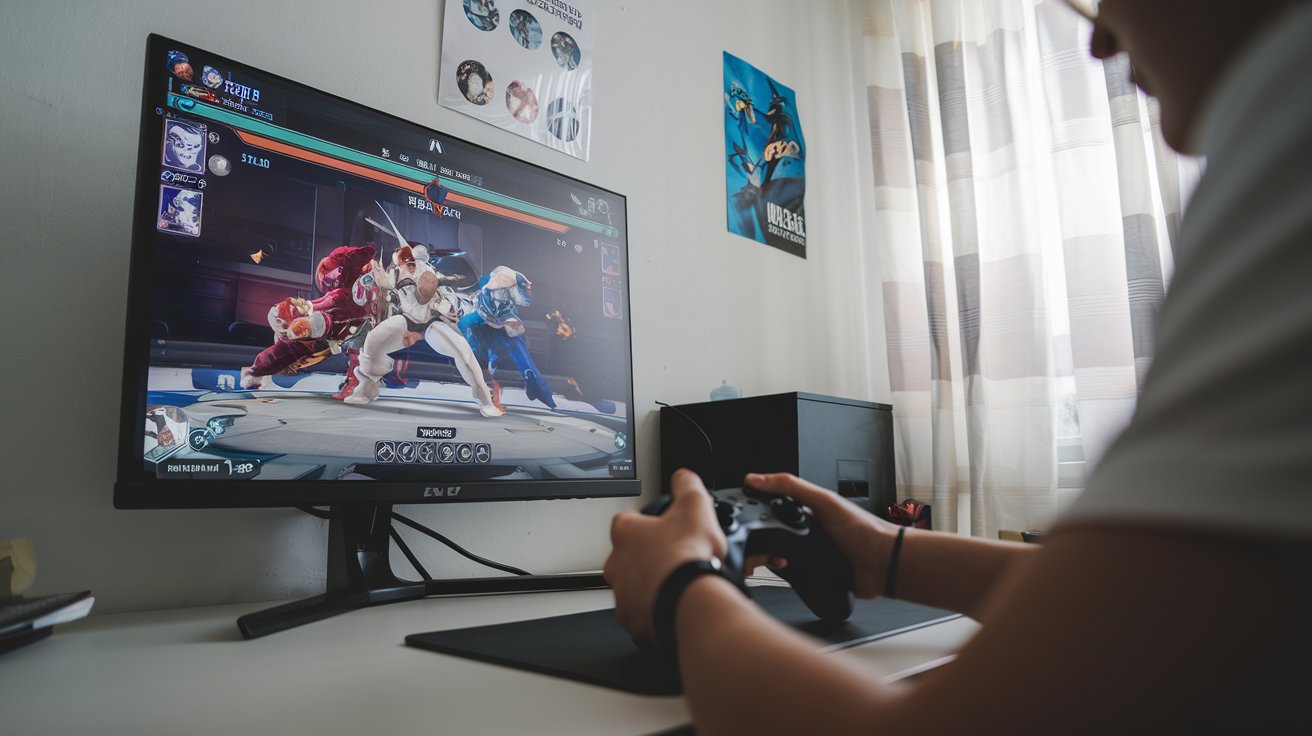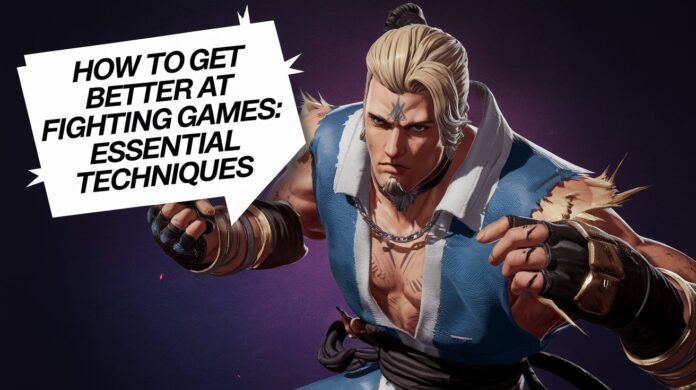Fighting games are a thrilling blend of strategy, reflexes, and skill. Whether you’re button-mashing your way through Street Fighter, perfecting combos in Tekken, or mastering mix-ups in Mortal Kombat, there’s always room to level up your game. The journey from casual player to competitive fighter can feel daunting, but with the right techniques and mindset, anyone can improve. In this guide, we’ll break down essential techniques to help you get better at fighting games, optimize your practice, and dominate the competition. Let’s dive in!
Why Fighting Games Are Worth Mastering
Fighting games have been a cornerstone of gaming culture since the days of arcades. Titles like Super Smash Bros., Dragon Ball FighterZ, and Guilty Gear Strive continue to captivate players with their depth and excitement. Unlike other genres, fighting games pit you directly against another human opponent, making every victory a testament to your skill. Plus, with thriving online communities and esports scenes, there’s never been a better time to sharpen your abilities.
If you’ve ever wondered how top players make their moves look effortless, the secret lies in mastering core techniques and building a strong foundation. This blog will cover everything from basic mechanics to advanced strategies, all while keeping it beginner-friendly and actionable. Let’s get started with the essentials.
1. Master the Basics: Know Your Game Inside and Out

Before you can pull off flashy combos or outsmart your opponent, you need to understand the fundamentals of your chosen fighting game. Every title has its own mechanics, so take time to learn the ropes.
Learn Your Character
- Pick a Main: Choose one character to focus on initially. Each fighter has unique moves, strengths, and weaknesses. Sticking to one helps you build muscle memory and confidence.
- Study the Move List: Open the command list in-game and practice every move. Pay attention to normals (basic attacks), special moves, and supers. For example, in Street Fighter, Ryu’s Hadoken (fireball) is a core tool—know how to use it effectively.
- Understand Frame Data: This is a bit technical, but it’s gold. Frame data tells you how fast your moves come out and how long they take to recover. Faster moves are safer; slower ones are riskier but often hit harder.
Grasp Core Mechanics
- Blocking: Learn to block high and low attacks. Most games punish you for guessing wrong, so practice reacting to your opponent’s moves.
- Movement: Master walking, dashing, and jumping. Good positioning can make or break a match.
- Punishes: When your opponent whiffs (misses) an attack, capitalize with a quick counter. Start with simple jabs and work up to full combos.
2. Build Muscle Memory with Combos
Combos are the bread and butter of fighting games. They let you chain attacks together for maximum damage, turning a single hit into a game-changer.
Start Simple
- Begin with basic bread-and-butter (BnB) combos. These are reliable sequences every character has. For example, in Tekken, a launcher followed by a juggle is a staple.
- Practice in slow motion. Break the combo into parts, then speed up as you get comfortable.
Use Training Mode Effectively
- Set Goals: Aim to land a combo 10 times in a row without dropping it.
- Record the Dummy: In games like Street Fighter V, record the dummy to block or counter after your combo. This teaches you what’s safe.
- Timing is Key: Many combos rely on precise inputs. If you’re dropping them, slow down and focus on rhythm.
Level Up
- Once you’ve got BnBs down, experiment with situational combos. Wall combos, corner pressure, and counter-hit starters add versatility to your game.
3. Develop a Strong Defense

Offense wins rounds, but defense keeps you alive. Top players don’t just attack—they survive.
Master Blocking
- High vs. Low: Most games mix overheads (high attacks) and lows. Watch your opponent’s animations and practice switching stances.
- Patience: Don’t mash buttons when under pressure. Wait for an opening.
Learn to Escape Pressure
- Reversals: Use invincible moves (like a Dragon Punch) to interrupt your opponent’s offense. Timing is critical—practice in training mode.
- Tech Throws: Throws are common in close-range fights. Learn your game’s throw-break mechanic (usually a button press within a tight window).
Anti-Air Like a Pro
- When your opponent jumps, punish them with an anti-air move. In Mortal Kombat, a well-timed uppercut can stop aerial aggression cold.
4. Read Your Opponent: The Art of Mind Games
Fighting games are as much mental as they are mechanical. Predicting and countering your opponent’s habits is a skill that separates good players from great ones.
Observe Patterns
- Does your opponent always jump after a knockdown? Anti-air them. Do they spam projectiles? Jump over and punish.
- In online matches, take mental notes after each round. Adapt your strategy accordingly.
Condition Your Opponent
- Use repetitive actions to bait reactions. For example, throw a fireball twice in Street Fighter, then fake the third to catch a jump-in.
- Mix up your attacks. Alternate between high and low, fast and slow, to keep them guessing.
Stay Calm
- Panic leads to mistakes. If you’re losing, take a deep breath and focus on one goal—like landing a single punish.
.5. Optimize Your Practice Routine
Improvement doesn’t happen overnight. A structured practice routine accelerates your progress.
Daily Drills (30-60 Minutes)
- Warm-Up: 10 minutes of movement and basic combos.
- Skill Focus: 20 minutes on a weak area (e.g., anti-airs, throw techs).
- Matches: Play online or against friends to apply what you’ve learned.
Analyze Your Gameplay
- Record your matches (most consoles and PCs have built-in tools). Look for mistakes: Are you dropping combos? Getting hit by the same move repeatedly?
- Watch replays of losses to spot opponent habits you missed live.
Learn from the Community
- Join Discord servers, Reddit threads, or X discussions for your game. Search for “how to improve at [game name]” to find tips from veterans.
- Watch tutorials on YouTube. Channels like Rooflemonger or Maximilian Dood break down mechanics for beginners and pros alike.
6. Master Advanced Techniques

Once you’ve got the basics, it’s time to push your skills further. These techniques take time but pay off big.
Frame Traps
- Chain moves with small gaps to catch opponents who press buttons. For example, in Tekken, a quick jab into a slower mid can trap impatient foes.
Okizeme (Oki)
- Control the wake-up game. After a knockdown, position yourself to pressure your opponent as they stand. Mix throws, meaty attacks (timed to hit on their first frame), and bait.
Footsies
- This is the neutral game dance of spacing and poking. Use safe, long-range moves to whittle down health or bait a whiff. In Street Fighter, Ryu’s crouching medium kick is a footsies classic.
7. Gear Up: Tools and Mindset
Your setup and attitude play a huge role in success.
Controller Choice
- Arcade Stick: Great for precision, especially in traditional 2D fighters.
- Gamepad: Comfortable and versatile—perfect for Smash or 3D games like SoulCalibur.
- Hitbox: A button-based alternative for lightning-fast inputs.
Test what feels natural. Skill matters more than gear, but comfort boosts consistency.
Mental Game
- Stay Positive: Losses are lessons. Focus on improvement, not rank.
- Set Goals: Aim to land a new combo in a real match or win a local tournament.
- Take Breaks: Burnout kills progress. Step away if you’re tilting.
8. Join the Community and Compete
Fighting games thrive on interaction. Engage with others to grow.
Local Scene
- Find arcades, gaming cafes, or meetups. Nothing beats in-person sparring.
- Enter small tournaments. Even if you lose, you’ll learn fast.
Online Play
- Ranked matches test your skills. Don’t fear losses—focus on adapting.
- Share clips on X or forums for feedback. Tag your game’s community for visibility.
Watch the Pros
- Streams and tournaments (EVO, Combo Breaker) showcase top-tier play. Study their spacing, punishes, and decision-making.
SEO Hook: “Best fighting game communities” or “how to find local fighting game tournaments” can attract readers eager to connect.
Final Thoughts: Keep Grinding, Keep Winning
Getting better at fighting games is a marathon, not a sprint. Start with the basics—movement, combos, defense—then layer on advanced tactics like footsies and mind games. Practice smart, analyze your play, and embrace the community. Every loss is a step toward mastery, and every win is proof of your growth.
So, pick up your controller, hit the lab, and start your journey. Whether you’re aiming for casual fun or the EVO stage, these essential techniques will carry you far. What’s your favorite fighting game? Drop a comment below and let’s talk tech!

Zareb Saleh is a journalist at Gulf Today and a ghostwriter for Gameoholic, specializing in gaming, technology, and digital culture. With a keen eye for industry trends, he delivers insightful stories that engage and inform readers.




